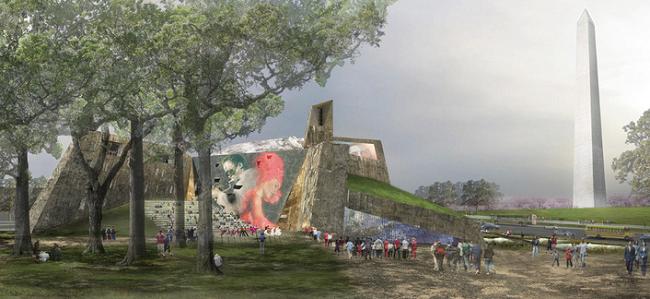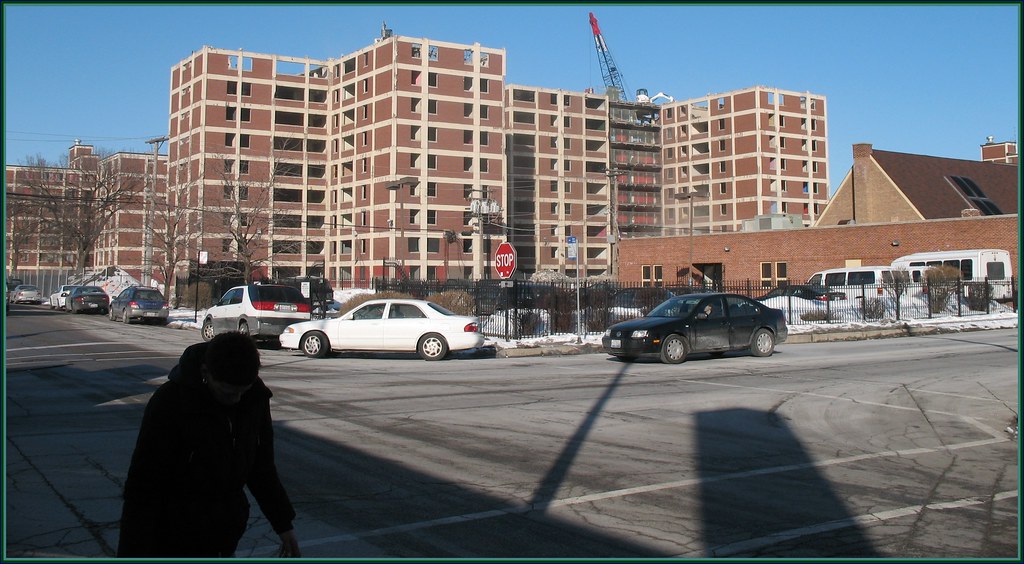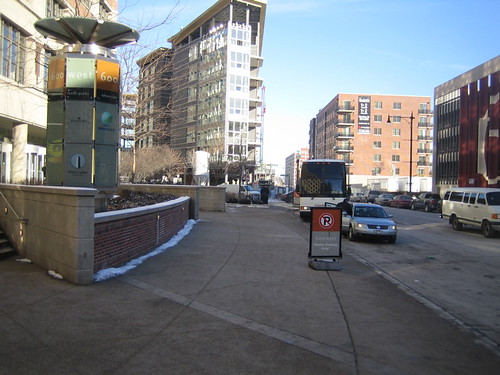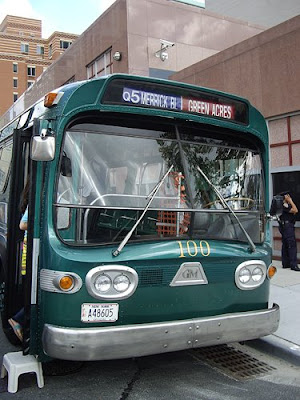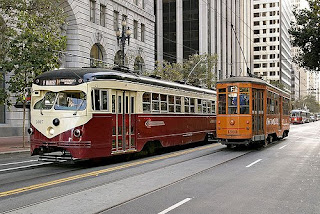 MILWAUKEE, March 32, 2010 (IP*) –
MILWAUKEE, March 32, 2010 (IP*) – Ronald Dykes is executive director of Opportunity City, a non-profit organization dedicated to fighting poverty in Milwaukee. Housed in what was once a sprawling steel fabrication plant in the heart of one of the city’s poorest neighborhoods, the organization is generating lots of buzz in policy and academic circles across the country for its innovative initiatives.
Q. Opportunity City isn’t a city; it’s a non-profit group. Everyone calls you “mayor,” but your title is executive director. What’s up with the city shtick?A. We are like a city. Inside this old factory space, we house staff for the 27 different anti-poverty programs that we run. A few are big programs; many are small. About 475 people work here, and we get about the same number of clients and visitors coming through every day. There’s a lot of human bustle in here. The office cubicles are arranged in blocks like a street grid. There’s a big thoroughfare we call Main Street, and there’s Coffee Alley and an area we call The Park where we have big staff meetings. And…
 Q. So, you’re like a city because you’ve arranged your cubicles a certain way? That’s a pretty shallow metaphor isn’t it? A.
Q. So, you’re like a city because you’ve arranged your cubicles a certain way? That’s a pretty shallow metaphor isn’t it? A. Well, if you’d let me finish…We don’t just look like a city; we act like one in some important ways. We intentionally created Opportunity City to try to capture the agglomeration effects that flow from the concentration of resources and functions in cities. Everyday, there are lots of low-income people here. Everyday, there are lots of people in here helping them directly or indirectly. In house, we’ve got people working on solving child care, transportation, housing, food and health care problems for individuals. We’ve got labor market analysts, administrators and support staff, employment recruiters, job trainers and representatives from apprenticeship programs working with individuals and on policy-level changes. There are also policy designers, grant writers, program evaluators and various academic interlopers. They’re all here, everyday. In close proximity. Trouble-shooting problems. Bouncing ideas off each other. Able to shout over the cubicle wall to get help. Coordinated complexity happening in close quarters is not a bad description of what a city is, and it’s what we are doing at Opportunity City.
 Q. Agglomeration effects. Coordinated complexity. Fancy talk. Please tell us in plain English what the hell you’re talking about. A.
Q. Agglomeration effects. Coordinated complexity. Fancy talk. Please tell us in plain English what the hell you’re talking about. A. It’s simple, really. It’s just what I said a second ago: if you can get a lot of people working closely together on a set of related problems, you can be more effective at solving problems, at being productive. Density and proximity make it easier, more likely for people to problem-solve effectively in real-time. That’s the essence of these concepts. They’ve been at the heart of understanding why people and firms locate in cities.
Q. For a non-profit, you seem very well funded indeed. Where does all the money come from?A. We’ve been blessed with very extravagant donations from a few wealthy benefactors in town. Our policy innovations have attracted grants from national foundations. And, of course, we’ve been fortunate to get funding from the new federal block grant programs for workforce development and affordable housing.
Q. You sound excited. Knowing the history of anti-poverty efforts, aren’t you setting yourself up for disappointment? A. First,
hold on a minute. Anti-poverty efforts often get a bad rap they don’t deserve. Social Security keeps lots of elderly folks out of poverty. If that’s a failure, give me more. The Earned Income Tax Credit has helped millions of low-income working families make work pay enough to afford housing and groceries. That’s a success story in my book, and so is the fact that many low-income folks have gotten good jobs through some of the better job training and placement programs. So, no, I don’t think we’re setting ourselves up for disappointment. In fact, this is one of the most exciting times in American history to be involved in the fight against poverty. Thanks to the new national health care program, every American now has affordable health insurance. This is a huge boost to low-income people. And there’s the new Skill Net program. Under this program, every American worker gets financial help to keep their job skills up-to-date and, when a job is lost, gets decent wage insurance payments to bridge over periods of unemployment without having to plunge into poverty to qualify for help. For struggling low-income workers, this new program will help keep them attached to jobs and prevent them from cycling in and out of poverty and low wage work.
Q. You like what the Obama administration has done to help fight poverty. Understood. But what are you doing locally at Opportunity City?
A. What the feds are doing is really important to our efforts. Because federal efforts will help keep many low-income families and workers from falling back into poverty so easily, at the local level we can focus on harder problems like helping people with few skills and little-to-no job experience get jobs and rebuilding distressed neighborhoods. That’s what we’re doing at Opportunity City.
Q. Nice generalities. Any specifics?A. Sure. We’ve just launched an experimental program called Project Search and Employ. Basically, the program aims to create a group of companies with a strong profit incentive to recruit poor people with few job skills and successfully place them in real jobs with good wages and benefits. It works like this. There’s a big pot of money—all from a very generous private donor—controlled by a team of investors. The investors are a bunch of experts—experts in things like training workers, analyzing businesses, understanding industry sectors and supply chains, poverty policy, mentoring and coaching, and program evaluation. What they do is invest in proposals to create what we call search and employ companies or SECs. The SECs—each using different strategies, but all working within the same set of very high poverty census tracks—go out and find poor people who don’t have much work history, but are able to work, and hire them for a job with the SEC that involves them being trained for a real job. The SEC job is real enough, too. The recruits get paid a decent wage and benefits, and pay taxes and can be fired at the will of the employer. Anyway, if and when the SEC gets the recruit a real job—not with the SEC—then, our investors pay the SEC a big bonus. And if the recruit stays employed long enough, they get an even bigger bonus. If the SECs don’t get people good jobs for long enough, they’ll fail as businesses. Even though a program like this will work best when the labor market improves, we’re excited to get started on it because it not only gives a lot of poor people jobs right away—the SEC training jobs—but it also incentivizes lots of creative thinking about how to turn low-skilled people into stable employees.
Q. Profit from poverty. Isn’t that morally yucky?A. Don’t try to be cute. The profits come from
increasing employment and
reducing poverty.
 Q. Fair enough. What else are you doing?A.
Q. Fair enough. What else are you doing?A. Running programs is not all we do. We also try to push larger systems—like schools, chambers of commerce and city governments—to do things that help fight poverty. For example, we’re trying to create a fairly dense walkable low-income neighborhood where there are currently lots of boarded-up houses and very few businesses. To do this, is going to require help from everybody. We’ll need good schools. Grocery stores and other businesses willing to look with fresh eyes on the economic prospects in low-income neighborhoods. New zoning ordinances allowing for mixed use. And more.
Q. Now, it’s your turn to hold on a minute. Isn’t “walkability” code for gentrification?A. It can be, sure. But first you need to understand that walkable neighborhoods can really help make life much easier and more affordable for low-income people. Think of the transportation costs and life-hassles you can avoid if child care, schools, grocery stores, places of employment, government offices, parks and transit stops are located within walking distance. The gentrification concern comes in because more and more of what we used to call yuppies like this stuff too and are willing to pay a premium to live in such places and drive up costs for everybody. But our plan is keep these neighborhoods affordable for the people who already live there. And we’re doing that with a range of programs including generous low income housing tax credits, land trusts, and value-latching which taps into any rise in property values to pay for programs that keep housing affordable. We’ve structured all this so that, over time, property values will be able to return to their real market values but only as long as the neighborhood maintains enough affordable housing capacity, too.
Q. You’re smiling. How is that possible with all the misery, all the failure of the American Dream you see every day? A. Yes, poverty is terrible. And, yes, it’s heartbreaking to see what it does to people. But as I said before, this is a very promising moment for America. There’s a new sense that we’re all in this together, and a new willingness to work for the common good. For me, in the context of the fight against poverty, it’s especially wonderful to see Americans rediscover the natural strengths of cities, to see cities once more as the engines of growth and opportunity they are.
Interview confabulated, condensed and edited by Dan Lorentz. *IP is an acronym for Imaginary Press, a wire service providing factually dubious news and feature stories to credulous media outlets worldwide.
--- --- ---
Note: This will be my last post as a regular
Where contributor. My experience here has inspired me to continue to blog about city issues, except that now I want to concentrate on a more local project. In mid-April, I hope to launch
My Athens, a blog about my new hometown, Athens, Georgia. [
Note: This note and the note it’s embedded in are true, unlike most of the fiction that precedes it.]
(Photos--in the order they appear--from Flickr users craigallyn, opendemocracy, Matthew Shelley. The original full-sized color version can be viewed by clicking the photo.)
 Urbanization is caused, at least in part, by scarcity. Certain resources are limited, and thus more efficiently used in a communal setting. Through urbanization, more people have access to these resources than would if settlements were less densely populated. This is true of everything from intangibles like creativity to more solid things like water and electricity, which are more cheaply and easily distributed to dense urban areas than rural places. Cities are often trumpeted these days as "the solution" to the challenge posed by global climate change because of this very phenomenon; as energy sources become more scarce, the efficiency of densely populated cities becomes the most viable way for developed nations to maintain a high standard of living while simultaneously reducing energy usage.
Urbanization is caused, at least in part, by scarcity. Certain resources are limited, and thus more efficiently used in a communal setting. Through urbanization, more people have access to these resources than would if settlements were less densely populated. This is true of everything from intangibles like creativity to more solid things like water and electricity, which are more cheaply and easily distributed to dense urban areas than rural places. Cities are often trumpeted these days as "the solution" to the challenge posed by global climate change because of this very phenomenon; as energy sources become more scarce, the efficiency of densely populated cities becomes the most viable way for developed nations to maintain a high standard of living while simultaneously reducing energy usage. On the other hand, it could be argued that the end of energy scarcity would make developed world-conditions in currently-developing countries much, much easier to achieve. This would be a massive economic boon to lower-income and impoverished people around the world, freeing up people previously locked into cycles with few or no opportunities for advancement, greatly accelerating the growth of the Creative Class across the globe. Innovation-intensive fields tend to encourage clustering, as Richard Florida has argued so thoroughly in his books, meaning that a massive shift like the advent of cold fusion power might actually be a boon to urbanism.
On the other hand, it could be argued that the end of energy scarcity would make developed world-conditions in currently-developing countries much, much easier to achieve. This would be a massive economic boon to lower-income and impoverished people around the world, freeing up people previously locked into cycles with few or no opportunities for advancement, greatly accelerating the growth of the Creative Class across the globe. Innovation-intensive fields tend to encourage clustering, as Richard Florida has argued so thoroughly in his books, meaning that a massive shift like the advent of cold fusion power might actually be a boon to urbanism.

